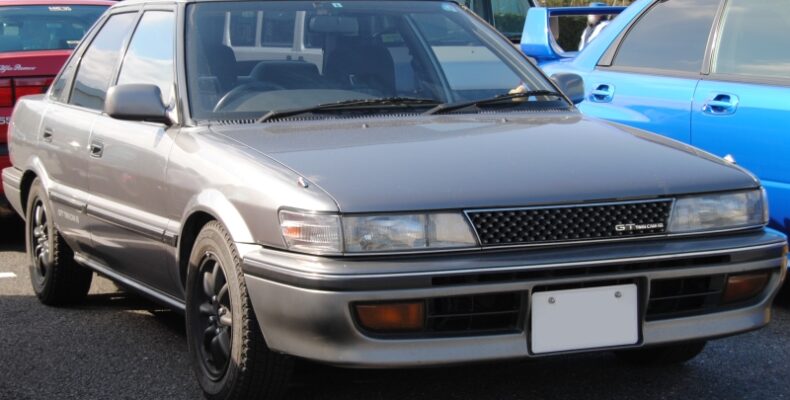The Toyota Sprinter is a compact car that has seen many changes over the years. New improvements can be seen with every next generation of the sedan. Although production of the Sprinter ended in 2000, this car served as the footing for other Corolla-derived vehicles. Initially, the vehicle catered to and was available only to Japanese buyers before the Toyota Corolla E120 which succeeded it. This Corolla variant was sold at the Toyota Auto store, which served a high-end clientele, as compared to the Toyota Corolla Store.
Exterior Looks
True to the era it began production, the Sprinter started as a compact, humble car moving toward an elongated and sleek design. The change in exterior was a gradual process. The third generation E40, E60 series contained a front grill carrying a sleek appearance. In the following generation, the head and tail lights earned a more complex and bulky appearance, which later changed to a futuristic look with pop-up headlights. By the final generation, the car lost its pop-up headlights but instead gained a spoiler and a black bumper, separate from the body. Overall, all the Sprinter generations looked identical to the Corolla vehicles that were being produced alongside them. It was only in the later generations that the design shifted and the Sprinter got its own identity and look.
Interior Design
The initial versions of the vehicle had little focus on the luxury aspect. The car was derived for sporty applications, and therefore, Toyota did not pay much attention to premium amenities. Comfortable seats, air conditioning, and a stereo system performed all the basic functions. However, in the later trims, wooden accents were used to enhance the aesthetics of the cabin. Overall, black was used as the prime color in all the dashboard, seat covers, and door panels.
Engine & Performance
The Toyota Sprinter was known for its athleticism and as such starting from the first-generation, only the best powertrains were used in them. The first Sprinter had a 1077 cc 3K engine that was later upgraded to 1407cc in some markets. The second-generation also came with either a 1588 cc T engine or the 2T-G high-performance Trueno version.
The Toyota Sprinter series hosted some of the most successful Toyota engines of all time. The K series, then the T series, and finally the famous A series went into the Trueno version making it highly desirable. The 4A-FE and the 4A-GE deserved special appraise for their throaty high-revving performance.
By the sixth generation, the Sprinter was truly revolutionary. The 4A-GE powertrain was upgraded to 20V, ITBs, VVT, and a compression ratio of 10.8:1. If that wasn’t impressive, the 0-60 mph acceleration could be completed in 6 seconds. The 5-valve per cylinder revolutionary setup catapulted the Sprinter and the 4A-GE into the heights of fame.
Verdict
The Toyota Sprinter awakened the spirit of racing in the Japanese community as well as in enthusiasts worldwide. It was due to this vehicle that Toyota made a name for itself in the sports car industry and made great inroads based on the Sprinter’s triumphs.
There are many Japanese Used Car, trucks buses, and farm tractors in all Japanese market.
If you want to import a Used Toyota Sprinter, please check the recommended Japanese used car export companies for Toyota Sprinter.
Top Recommended Japanese Used Car Export Companies for International Customers
If you want to know more details about specifications and models, please refer to Wikipedia or other catalogs.
